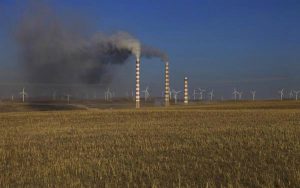Rules that will form the basis of nationwide carbon trading in China come into force this month, but details on the design of a national scheme remain elusive, meaning it is increasingly likely to start much later than originally intended in 2016.
While the seven pilot carbon trading schemes already in operation will provide a great of experience of how a national scheme will eventually be implemented, lessons learnt from the inherent flaws in regional cap-and-trade will need to be integrated in the blueprint for a national scheme, say commentators.
And much will need to be done practically before the world’s largest energy user can put a price on carbon at a national level, says Hongliang Chai, a Norway-based analyst of Chinese carbon markets with Thomson Reuters Point Carbon, which this week published its outlook for global carbon markets in 2015.
“We think a national market is very unlikely to start by 2016. The current pilots are operating without an important building block of functional market-based scheme: a tax and accounting framework,” Chai said, adding that an initiative funded by the World Bank is unlikely to clarify these and other essential details until after next year.
The year 2018 would be a more realistic start date for a national scheme that covers at least half of China’s provinces, the analysts adds. “Politically though, I won’t be surprised that a national ETS starts in 2021, namely the beginning of the period for the 14th five-year plan.”
Making a success of carbon trading is viewed by some analysts as crucial if the world’s largest emitter is to direct energy-intensive sectors – particularly in the private sector – towards lower carbon technologies, but many challenges will have to be overcome to establish an effective market and avoid the failures of carbon trading schemes elsewhere.
While all seven pilot schemes reported almost full compliance in 2014, key information such as verified emissions has not been made public, making it extremely difficult to work out whether the scheme is actually in shortage, or by how much.
For analysts, a key question for Chinese carbon trading this year is the extent to which additional compliance information will be released, although the release of company-level data is viewed as unlikely.
And the volume of credits traded so far is extremely modest compared with the expansive reach of the areas covered – Beijing, Chongqing, Shanghai, Tianjin, Shenzhen, Guangdong and Hubei – which between them account for almost 30% of China’s GDP and a fifth of its population.
A loosening of rules that restrict trading to the compliance sector would allow financial players greater participation, says Chai, while a benchmarking of offset credits, known in the jargon as CCERs, will also raise trading volumes as opportunities increase to buy and sell spreads against regular permits issued in the seven pilot schemes.
Tight controls on the supply of offset credits will also be crucial this year to avoid a collapse in prices, and a decision will likely have to made this year to ban offsets from hydro projects – which account for a third of total Chinese offsets – being used for compliance in domestic schemes.
Forging a national market
While the administrators of regional pilot schemes consider reforms to the rules for their own markets, at central government level the country’s planning ministry, the National Development and Reform Commission (NDRC), will from January be tasked with drawing up an overall cap on emissions for China.
The NDRC will set thresholds for individual provinces, but these limits will need to get the nod from the State Council, China’s cabinet, while the planning ministry will also have to decide which parts of the economy will be given emissions caps.







